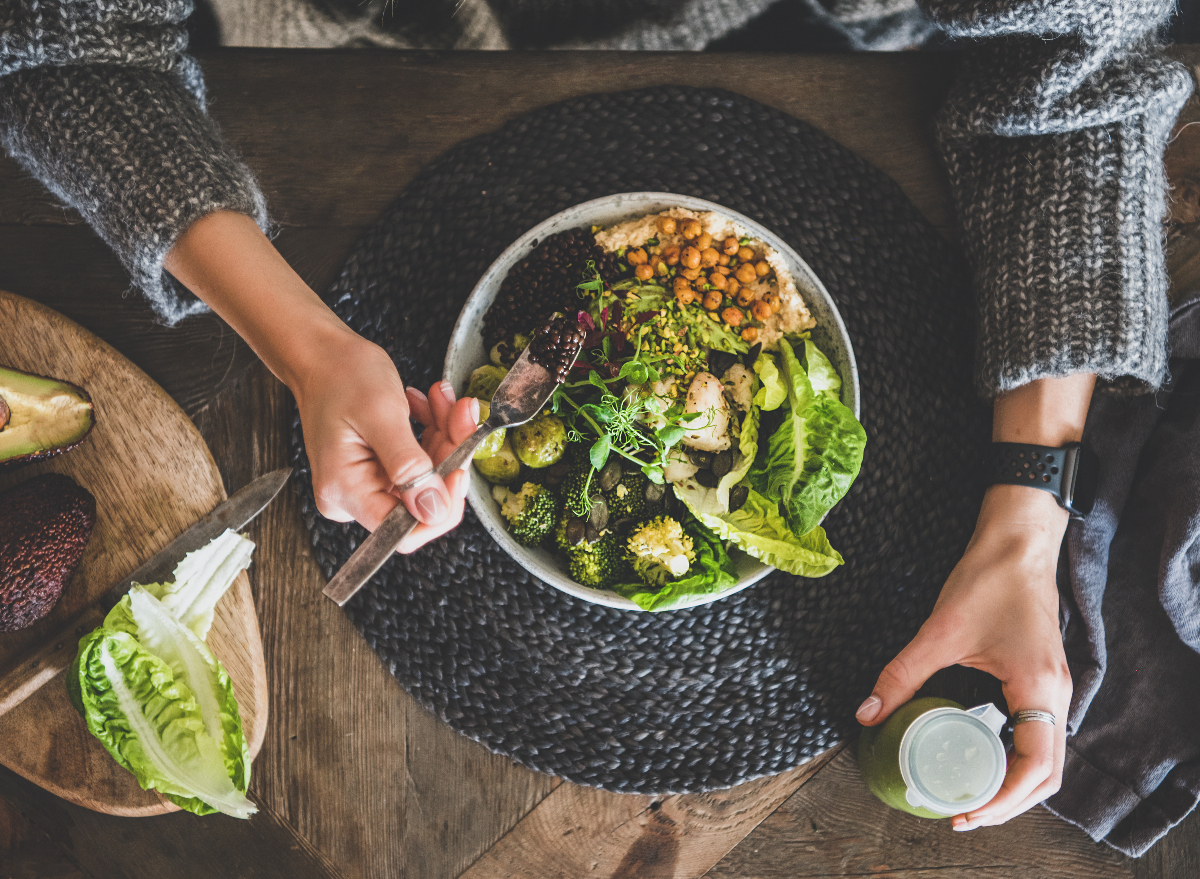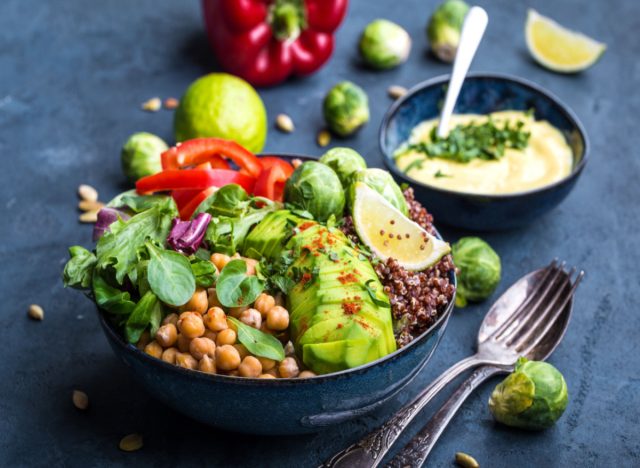The Most Crucial Eating Habit for High Cholesterol

Though you might not be able to feel cholesterol accumulating in your blood vessels, this thick, gunky substance builds silently, and it can spell danger for your health. High cholesterol impedes the flow of blood in your arteries, increasing your risk of heart disease and stroke. Even type 2 diabetes and some forms of dementia have been linked to an excess of the waxy build-up.
If you've received a diagnosis of high cholesterol, you've probably given some thought to how to bring your numbers down—hopefully with diet! (You can check out our recommendations here.) So what does a cholesterol-lowering eating plan really look like?
In years gone by, the standard medical advice was that to reduce blood cholesterol, people needed to reduce cholesterol from foods as much as possible. These days, though, more up-to-date research has shown that there's more to lowering your numbers than just cutting out your morning eggs.
According to the American Heart Association, the best way to reduce your cholesterol is to reduce your intake of saturated and trans fats, focusing instead on omega-3s and other unsaturated fatty acids. Bumping up your soluble fiber can also play a key role in lowering cholesterol, since fiber traps fats in the bloodstream, keeping some of them from being absorbed.

These recommendations are all helpful—but what if there was one healthy eating habit that helped you do them all at once? Good news: there is. Consuming more whole, plant-based foods (such as whole grains, nuts, legumes, fruits, and vegetables) provides this awesome all-in-one effect.
Foods in each of these categories have been linked to lower cholesterol. As far back as 2004, a large-scale study found that fruit and veggie consumption was inversely related to LDL (aka "bad") cholesterol in both men and women. And plants like oats, beans, barley, and tree nuts all have research studies supporting their place in a cholesterol-lowering meal plan. In fact, a 2020 review revealed that diet patterns high in plant foods, such as the Mediterranean, Nordic, DASH, vegetarian, and vegan diets, all reduced LDL cholesterol. Not only are these diets high in fiber, but they also tend to be lower in saturated fats and higher in unsaturated ones—again, checking numerous boxes for tackling high blood lipids.
Of course, this doesn't mean you have to eschew all animal products to lower your numbers. A few simple swaps of plant foods for animal ones could add up fast for results. Try including a favorite fruit or vegetable at every meal, start your day with a bowl of oatmeal, or sprinkle toasted nuts on salads for extra crunch. Or, to take things further, there's always the concept of a meatless Monday, a "flexitarian" diet, or weekday vegetarianism. By focusing on minimally processed, plant-based foods, you'll likely reap a happy harvest of healthier blood pressure.









